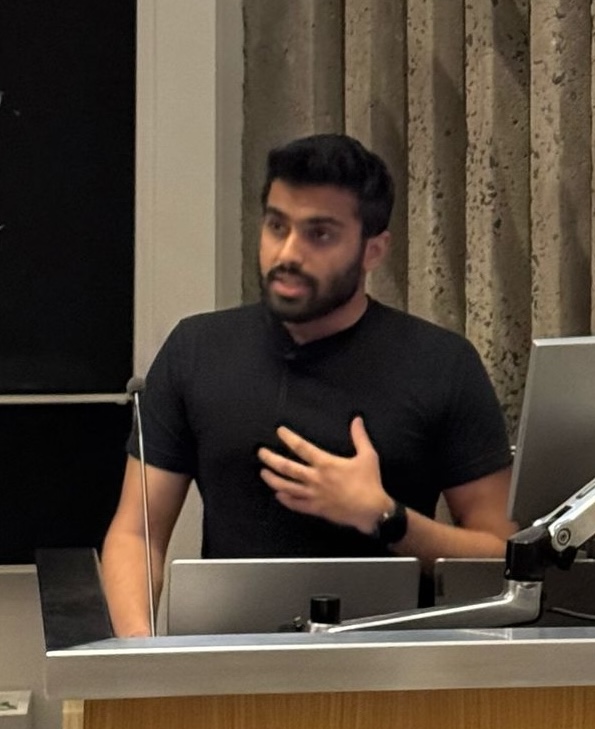About Me
Hi, I am Mrugank Dake, a neuroscience graduate student at Clayspace Lab, New York University. I study how memories are represented in the brain, with a focus on distributed coding and network-level coordination in the context of working memory. To understand this, I use multimodal neuroimaging methods like MEG, EEG, fMRI, ECoG, TMS, as well as computational approaches ranging from modeling behavior and neural activity to solving optimization problems over parallel compute and GPU.
I am currently a Data Science Intern at Meta Reality Labs, where I work on state-of-the-art Quest VR technology.
My journey into neuroscience began over a decade ago with the BrainBee competition in India, where a chapter on memory in the BrainFacts book sparked a lifelong fascination. That early interest evolved into an academic path aimed at understanding how information is represented in biological systems, both with and without brains.
To pursue this, I earned a dual degree (BS-MS) in Biology with a minor in Physics from the Indian Institute of Science Education and Research (IISER) Tirupati in 2021. Influenced by Eric Kandel's In Search of Memory, specifically his advice to pursue problems in biology/neuroscience starting with simple systems I spent my undergraduate years exploring a wide range of systems from E. coli, Arabidopsis to Drosophila, mice, and even squirrels understanding information across scales from genetics, neurobiology, to behavior.
Over time, I transitioned from reductionist approaches to systems neuroscience and neuroimaging, where I now study memory from a top-down perspective. I am especially interested in how distributed neural populations coordinate activity to represent information, a question so simple and elegant yet so complex that it keeps me wondering what's the right approach to even pursue it. As of now, my research goal is to bridge borders between the reductionist and holistic approaches and pursue this problem from a dynamical systems / control theory perspective.
When not working with data or debugging code, I am probably out biking, hiking, playing chess, or learning some new skill that catches my attention. I love thoughtful conversations, especially over good coffee, and I am always up for a long walk or a deep dive into a weird idea.
Check out my CV for more details.
Research
Publications
Perturbing human V1 degrades the fidelity of visual working memory 2025
Nature Communications Press CoveragePosters
Working memory synchronizes oscillations in visual cortex 2025
Computational Cognitive Neuroscience (CCN), Amsterdam, Netherlands
UpcomingDo perturbations to visual cortex impact working memory? 2023
Society for Neuroscience (SfN), Washington D.C., USA
View PosterLi-Koff: To Detect and Degrade N-Nitrosamines 2020
International Genetically Engineered Machines (iGEM), Giant Jamboree, Boston, USA
View PosterCoCa coli: probiotic immunotherapy against colon cancer 2019
International Genetically Engineered Machines (iGEM), Giant Jamboree, Boston, USA
View PosterTalks & Symposia
Perturbing human V1 degrades the fidelity of visual working memory 2024
Working Memory Symposium (WMS) (Virtual)
